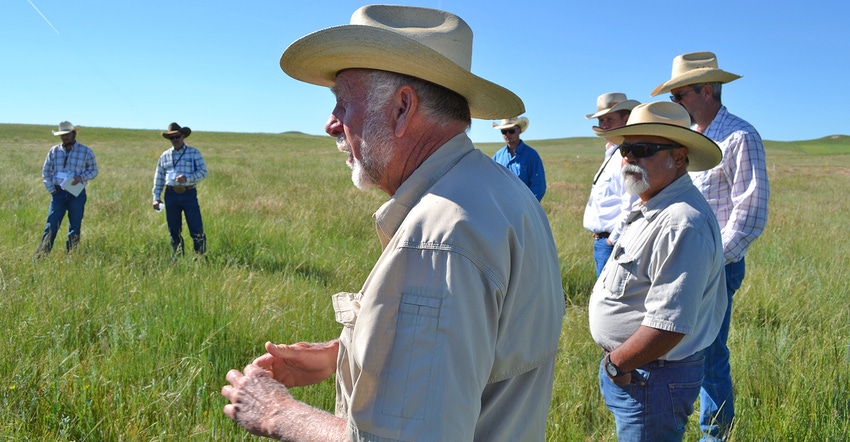September 25, 2019

Editor’s note: This is the third story in a series on grazing management.
By Robert Waggener
Undoubtedly, most readers of Western Farmer-Stockman are familiar with James Herriot’s classic book about animals and their owners, “All Creatures Great and Small.”
The title of that book came to mind during interviews with a grazing expert and progressive ranchers about grazing management. Their stories might collectively be titled “All things great and small.”
These livestock producers are boosting profits and ranch sustainability by increasing forage resources, and they are accomplishing the latter by managing their deeded and leased lands holistically, collectively focusing on those very details.
The level of detail these ranchers focus on is soil health, which means managing factors including livestock manure and urine. Or improving groundcover, which many do by concentrating on stock density, and the time and timing of grazing.
“Ten years ago, I thought as an industry we would have advanced much more in terms of grazing management,” says Jim Gerrish,, a grazing consultant and co-ranch manager from Idaho who teaches Management-intensive Grazing (MiG) schools across the U.S. and Canada. “This might sound depressing, but I’m actually pretty disappointed in the amount of progress that has been made.”
Gerrish believes that only about 20% of beef producers grasp sound grazing management. “They have a completely different approach to the ranching business than the mainstream. They are the ones who are increasing profitability every year,” he says.
Producers attend schools by Gerrish and other leading grazing experts around the country because they know they will learn about all things great and small, and about the importance of interweaving all of those things into their operations.
When waste isn’t a waste
The importance of manure and urine management worked its way into a four-day MiG school last year in Wyoming.
“Manure is a great source of fertilizer on your rangelands and pastures if it’s effectively managed,” explains Gerrish, emphasizing that more than 90% of the minerals that go into the front end of a cow come out the back end.
“To put that into context, a 1,200-pound cow with a calf at her side for seven months of the year will eat about 12,000 pounds of forage a year. At today’s commercial fertilizer and livestock mineral prices, a ton of hay contains probably $55 worth of nitrogen, phosphorus, potassium and other minerals,” Gerrish says.
If that cow is eating 6 tons of forage annually, she’s moving more than $300 worth of minerals through her systems each year, he adds. “That’s why it’s important to think about where your cows are pooping and peeing.”
Gerrish says there are two main areas of focus when it comes to manure and urine management. One is the distribution of livestock, and the other is the rate of breakdown of manure.
“Distribution is largely a function of stock density and travel distance to water. Generally speaking, the higher the stock density, the more uniform the manure distribution,” he explains. “For example, manure distribution patterns on daily rotations are much more uniform than weekly rotations.”
Rate of breakdown and release of minerals back to the soil are affected by several factors.
“Fiber digestibility is first and foremost. The higher the digestibility of the forage going into the animal, the more rapid will be the rate of breakdown for the manure,” Gerrish says. “Higher-quality forage going into the animal translates to higher animal performance — as well as being beneficial for soil microorganisms.”
He adds: “Soil health and biological activity within the soil are huge factors. The healthier the soil ecosystem, the more rapidly manure breaks down.”
Waggener writes from Laramie, Wyo.
About the Author(s)
You May Also Like




